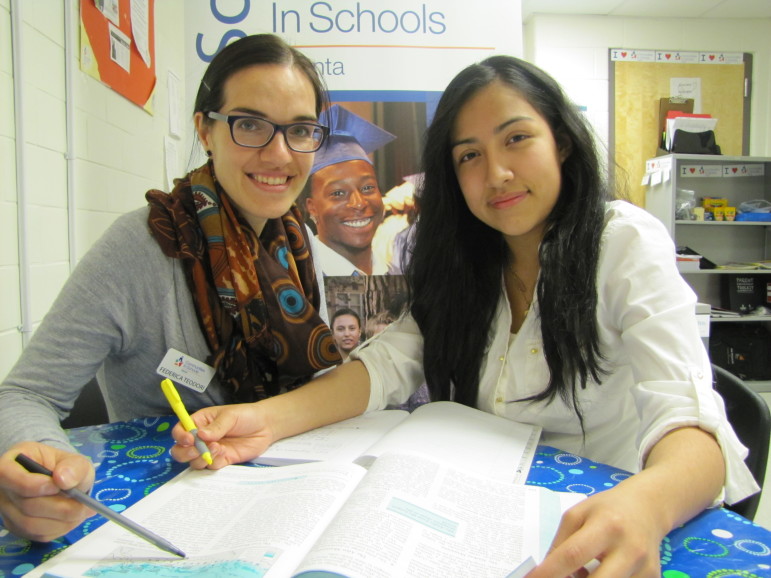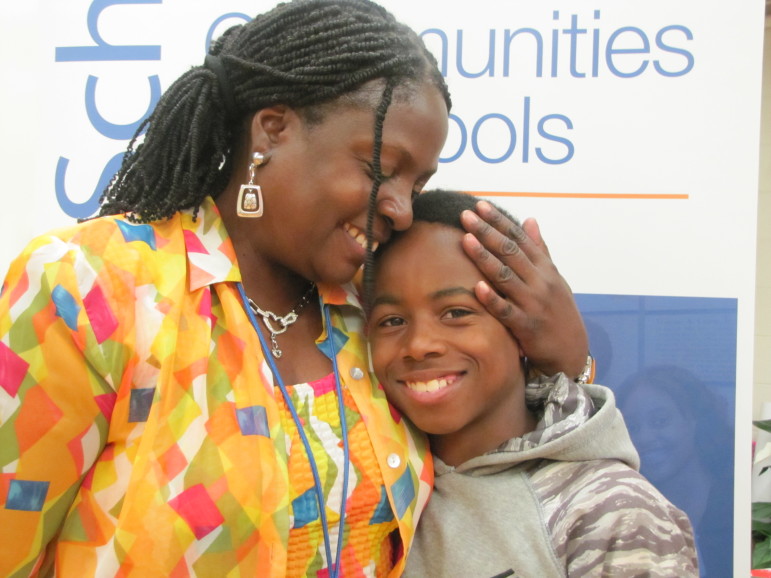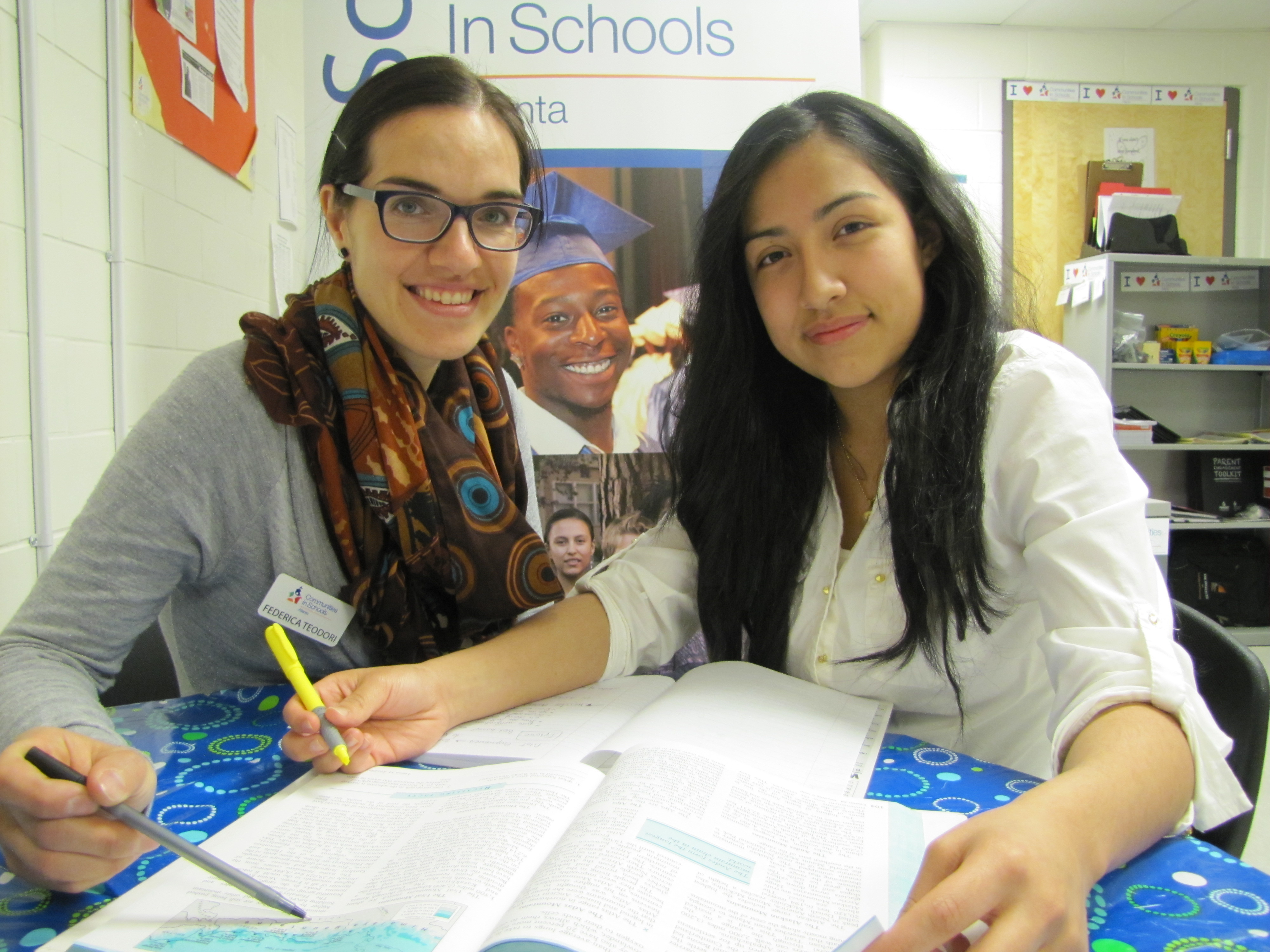
Photos by CIS Atlanta
Communities in Schools Site Coordinator Federica Teodori (at left) supported Susana, 16, to help her stay on track and in school after having to repeat ninth grade and then giving birth.
The term “collective impact” was coined five years by two authors writing in the Stanford Social Innovation Review. Philanthropies and other nonprofits swiftly jumped on the term and embraced the idea.
Organizations concerned about education, poverty and the needs of youth saw collective impact as a way to address thorny social problems that couldn’t seem to be solved by one sector.
The term refers to working across government agencies, nonprofit social-service organizations, community organizations and private companies.
“It’s not a new idea,” said Jeffrey Henig, professor of political science and education at Teachers College of Columbia University.
Heinz is among five authors of a new report from Teachers College, commissioned by The Wallace Foundation.
He and his colleagues looked at collaborations across the nation “to do a scan of what’s out there,” Henig said.

Communities in Schools Site Coordinator Erica Nimmons connected Mario with supports to improve his behavior at school and with After-School All Stars, where he worked with a high school mentor.
They looked at 182 collaborations that were “place-based, multi-sector, collaborative leadership efforts focused on educational outcomes,” according to the report.
The oldest was Communities in Schools Atlanta, begun in the 1970s, which partners with public and private groups to link students to a variety of social services they may need. It also focuses on dropout prevention, partnering with Emory University, the Zeist Foundation and Atlanta Public Schools to put volunteers and additional resources in schools.
The recent idea of collective impact grew out of an era of reduced federal funding, Henig said. There was a sense at the local level that federal support was problematic because of gridlock in Congress. Under the No Child Left Behind law, efforts to improve education were very narrowly focused, Henig said, and local agencies felt like they had to seek a more multipronged approach to improve children’s educational outcomes.
In looking at collective impact collaborations, researchers found some patterns.
“A lot of the collaborations are bigger than cities alone,” Henig said. Some may be county-wide, for example, responding to a problem of a high-need population in the inner city but including the more affluent suburbs.
Cross-sector collaborations are more likely to be in older cities that had high demographic change in the 1960s, ‘70s or ‘80s but are now more stable, Henig said. These are cities that had federally funded urban programs in those decades.
“We do think that it’s the more mature cities that are ripe [for cross-sector collaboration],” he said.
Most collaborations are using rather narrow measures to judge outcomes, such as test scores or graduation rates, Henig said.
The big difference between current collaborations and efforts 50 years ago is the use of data. Much more data is available now, he said.
Some collaborations such as Communities in Schools, Promise Neighborhoods and Say Yes to Education do not like to use the term collective impact, the report noted.
The researchers will be taking a closer look at efforts in three cities — Buffalo, New York; Milwaukee; and Portland, Oregon — to learn more about how collective impact is working. They plan to publish their findings in early 2017.


























